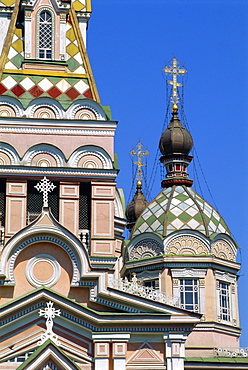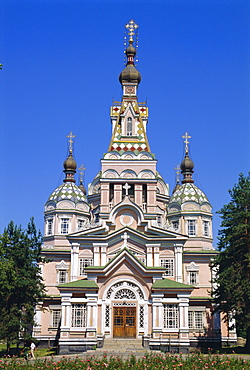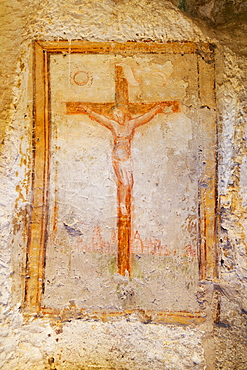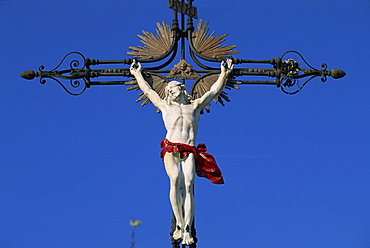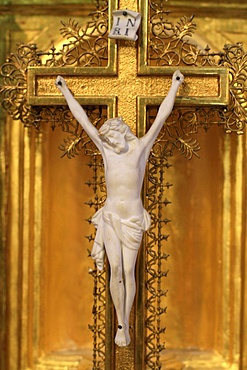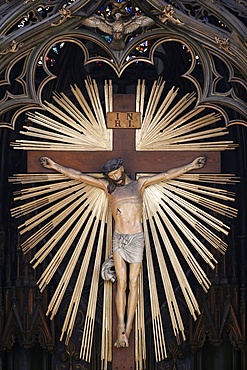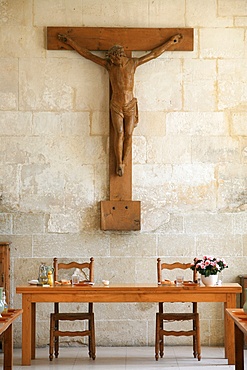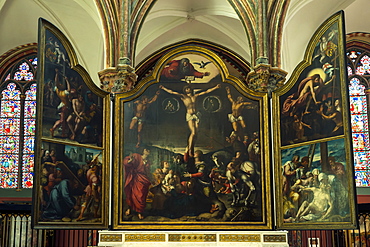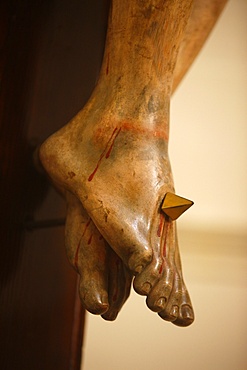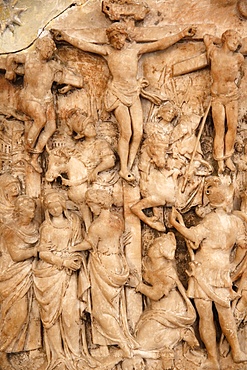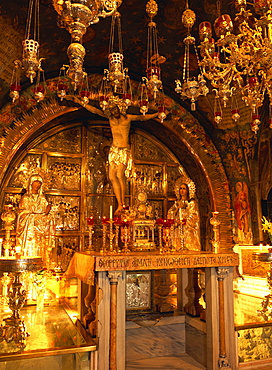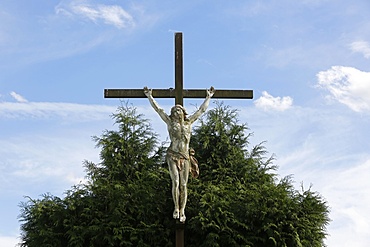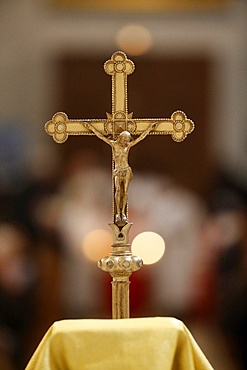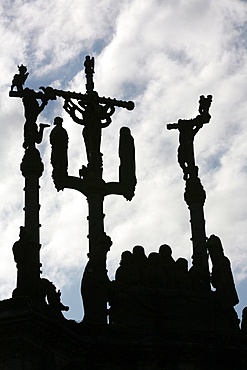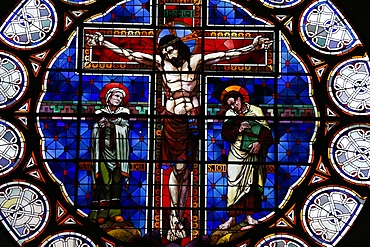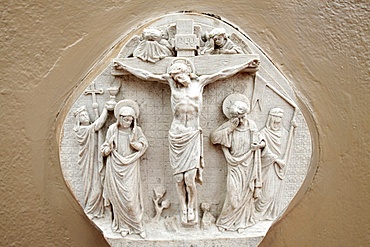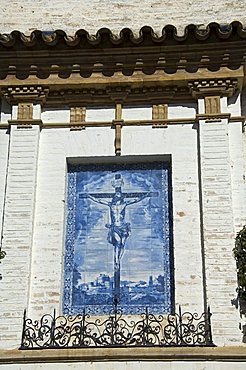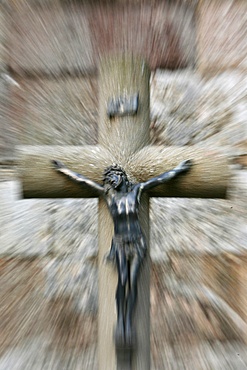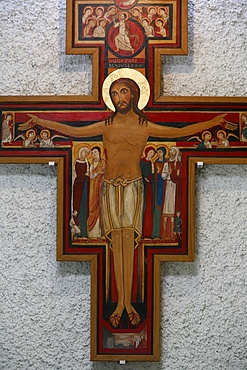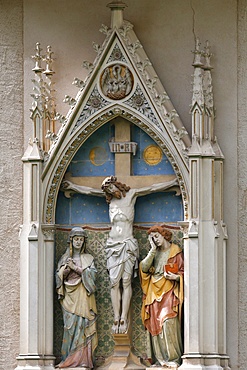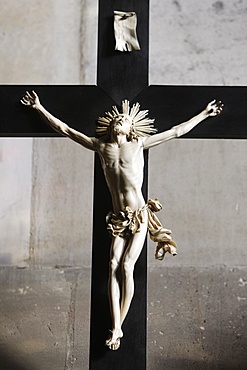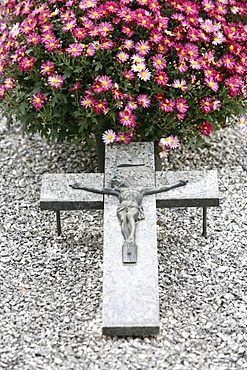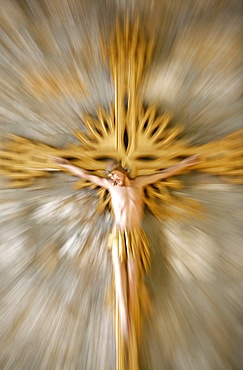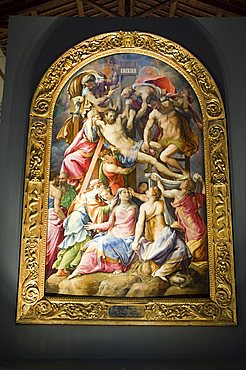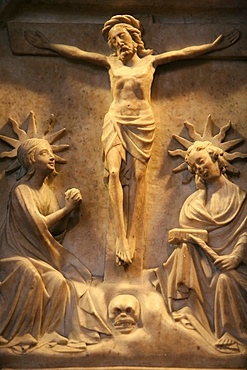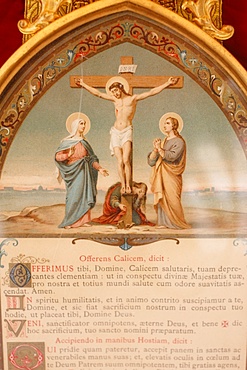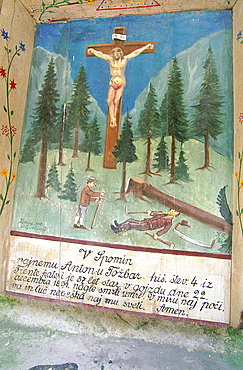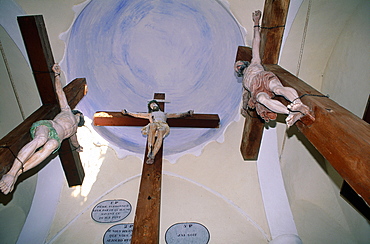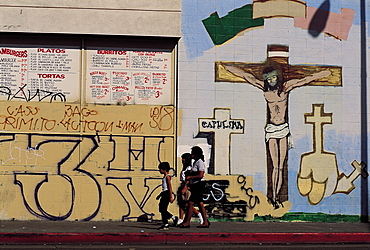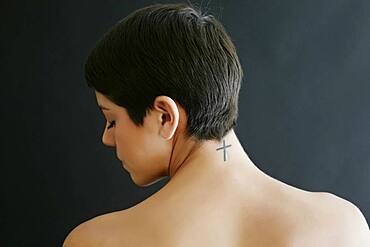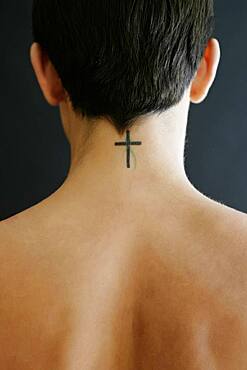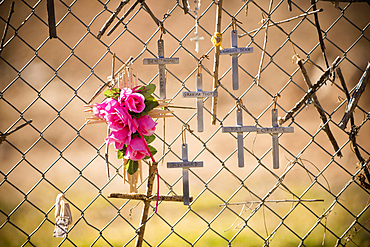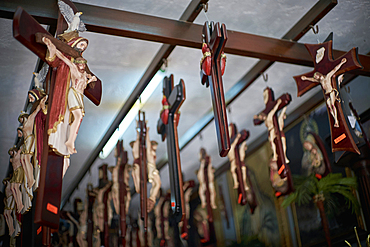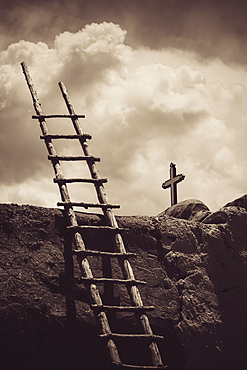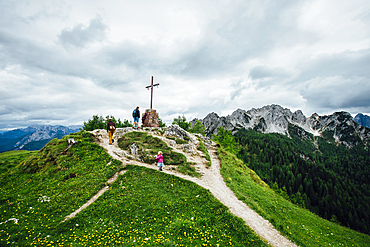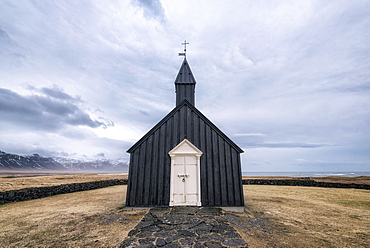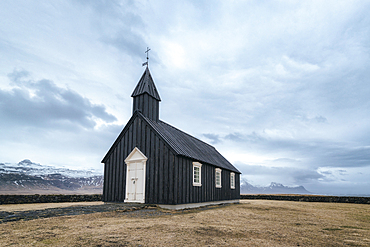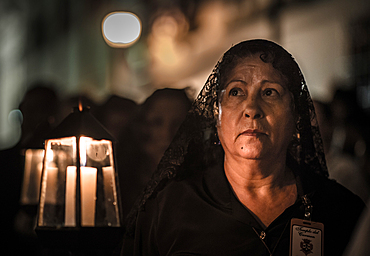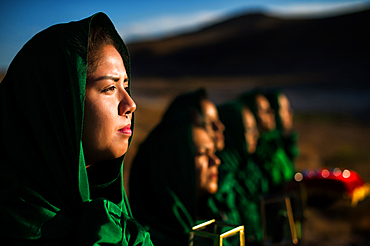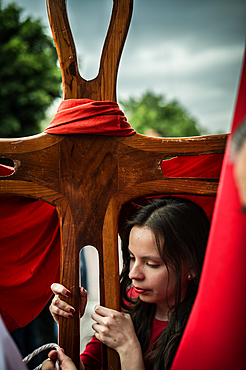Results
« Previous 1 2
161 results found

Original 16th century frescoes, Convent de San Bernadino de Siena, built 1552-1560, Valladolid, Yucatan, Mexico, North America
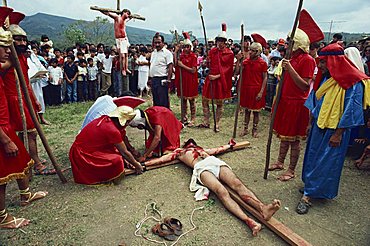
Men in Roman costume and men on crosses during a crucifixion re-enactment at Easter in Ciudad Santos, Mexico, North America

Lucy Reves crucifixion during Holy Week at Easter in Capitanan village in Bulacan Provice, Philippines, Southeast Asia, Asia

Easter Holy Week Way of the Cross procession and crucifixion during annual Moriones festival in the Philippines, Southeast Asia, Asia
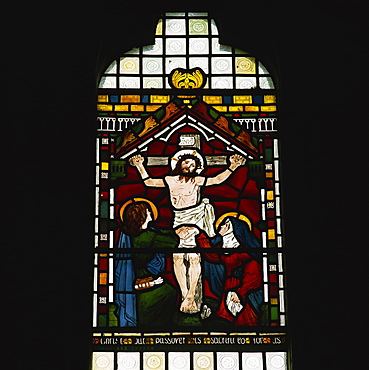
Crucifixion by Maddox Brown, stained glass by William Morris Company, Selsley church, Gloucestershire, England, United Kingdom, Europe
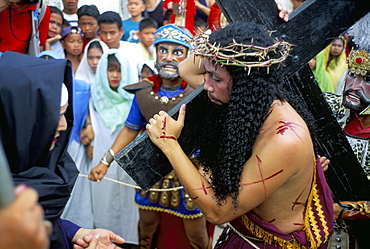
Christ of Calvary in Easter procession, Morionnes, island of Marinduque, Philippines, Southeast Asia, Asia

Christ of Calvary in Easter procession, Morionnes, island of Marinduque, Philippines, Southeast Asia, Asia
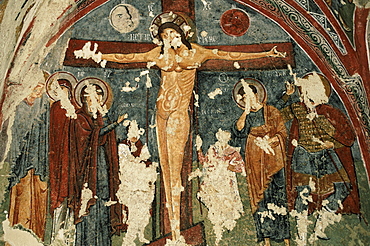
Crucifixion, Christian frescoes in Sandal Church, Goreme Open Air Museum, Goreme, Cappadocia, Anatolia, Turkey, Asia Minor, Eurasia

Detail of the Crucifixion by Andrea di Bartolo, painted in 1495, of two Roman soldiers gambling the Christ's tunic by throwing dice, Paris, France, Europe

The 12th century fresco of Christ's triumph on the cross in San Clemente basilica, Rome, Lazio, Italy, Europe

Stained glass of the Crucifixion in Notre Dame du Rosaire Catholic church, Saint-Ouen, Seine-Saint-Denis, France, Europe
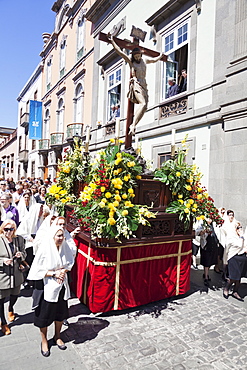
Easter procession Semana Santa, Vegueta old town, Las Palmas, Gran Canaria, Canary Islands, Spain, Europe

Crucifixon mural, painted by Castrat e Basil in 1950, Episcopal Cathedral, Port au Prince, Haiti, West Indies, Caribbean, Central America

Christ vanquishing Evil, symbolised by snakes, Ty Mamm Doue chapel, Quimper, Finistere, Brittany, France, Europe
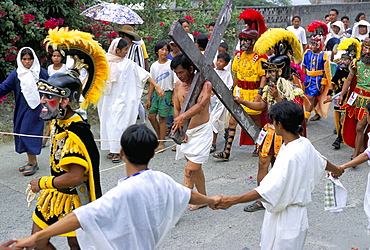
Christ of Calvary in Easter procession, Morionnes, island of Marinduque, Philippines, Southeast Asia, Asia

Stained glass from the 13th century of the Crucifixion, Chapel St. Vincent and Our Lady of Lourdes, Beauvais Cathedral, Picardy, France, Europe
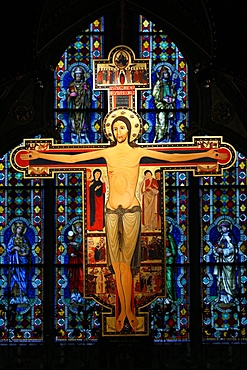
Jesus on the Cross, a copy of an Italian original from 1138, Heiligenkreuz Abbey, Lower Austria, Austria, Europe
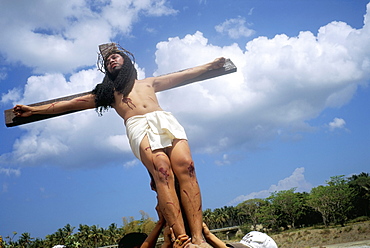
Crucifixion, Christ of Calvary, Easter procession, Morionnes, island of Marinduque, Philippines, Southeast Asia, Asia
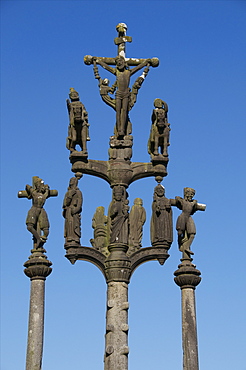
Calvary showing Christ on the cross flanked by two thieves, St. Thegonnec parish enclosure dating from 1610, Leon, Finistere, Brittany, France, Europe
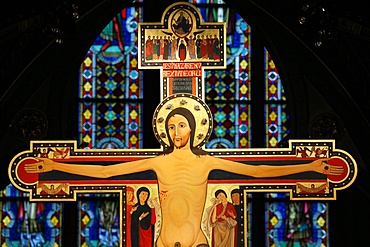
Jesus on the Cross, a copy of an Italian original from 1138, Heiligenkreuz Abbey, Lower Austria, Austria, Europe
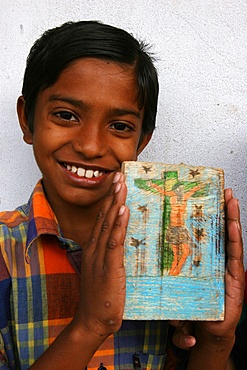
Catholic boy in a center run by the organisation Mass Education, Mathurapur, West Bengal, India, Asia

Verges, a small town in the Northeast of Catalonia (Spain), during Easter celebrates the Procession of Verges with skeletons dancing on the sound of a drum, Roman soldiers, known as the 'Manages', and a representation of the life and crucifixion of Jesus Christ. The Procession features the Dance of Death, a tradition from the Middle Age associated with epidemics and plagues and the only one remaining in Spain Ten skeletons dance to the beat of a drum to remember that no one is exempt of death. The backdrop of the medieval walls and towers of Verges is key to this macabre staging.
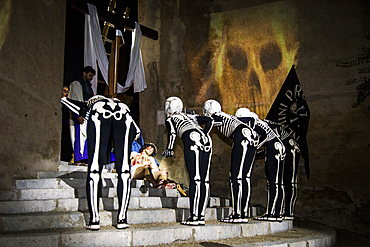
Verges, a small town in the Northeast of Catalonia (Spain), during Easter celebrates the Procession of Verges with skeletons dancing on the sound of a drum, Roman soldiers, known as the 'Manages', and a representation of the life and crucifixion of Jesus Christ. The Procession features the Dance of Death, a tradition from the Middle Age associated with epidemics and plagues and the only one remaining in Spain Ten skeletons dance to the beat of a drum to remember that no one is exempt of death. The backdrop of the medieval walls and towers of Verges is key to this macabre staging.

Verges, a small town in the Northeast of Catalonia (Spain), during Easter celebrates the Procession of Verges with skeletons dancing on the sound of a drum, Roman soldiers, known as the 'Manages', and a representation of the life and crucifixion of Jesus Christ. The Procession features the Dance of Death, a tradition from the Middle Age associated with epidemics and plagues and the only one remaining in Spain Ten skeletons dance to the beat of a drum to remember that no one is exempt of death. The backdrop of the medieval walls and towers of Verges is key to this macabre staging.

Verges, a small town in the Northeast of Catalonia (Spain), during Easter celebrates the Procession of Verges with skeletons dancing on the sound of a drum, Roman soldiers, known as the 'Manages', and a representation of the life and crucifixion of Jesus Christ. The Procession features the Dance of Death, a tradition from the Middle Age associated with epidemics and plagues and the only one remaining in Spain Ten skeletons dance to the beat of a drum to remember that no one is exempt of death. The backdrop of the medieval walls and towers of Verges is key to this macabre staging.
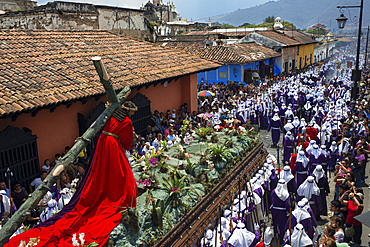
Easter Holy Week procession in Antigua, Guatemala. Jesus Nazareno de la Penitencia Procession in Antigua, Guatemala. Holy Week, friday.

Verges, a small town in the Northeast of Catalonia (Spain), during Easter celebrates the Procession of Verges with skeletons dancing on the sound of a drum, Roman soldiers, known as the 'Manages', and a representation of the life and crucifixion of Jesus Christ. The Procession features the Dance of Death, a tradition from the Middle Age associated with epidemics and plagues and the only one remaining in Spain Ten skeletons dance to the beat of a drum to remember that no one is exempt of death. The backdrop of the medieval walls and towers of Verges is key to this macabre staging.

Verges, a small town in the Northeast of Catalonia (Spain), during Easter celebrates the Procession of Verges with skeletons dancing on the sound of a drum, Roman soldiers, known as the 'Manages', and a representation of the life and crucifixion of Jesus Christ. The Procession features the Dance of Death, a tradition from the Middle Age associated with epidemics and plagues and the only one remaining in Spain Ten skeletons dance to the beat of a drum to remember that no one is exempt of death. The backdrop of the medieval walls and towers of Verges is key to this macabre staging.
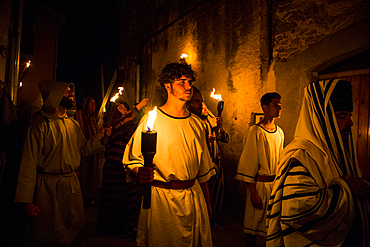
Verges, a small town in the Northeast of Catalonia (Spain), during Easter celebrates the Procession of Verges with skeletons dancing on the sound of a drum, Roman soldiers, known as the 'Manages', and a representation of the life and crucifixion of Jesus Christ. The Procession features the Dance of Death, a tradition from the Middle Age associated with epidemics and plagues and the only one remaining in Spain Ten skeletons dance to the beat of a drum to remember that no one is exempt of death. The backdrop of the medieval walls and towers of Verges is key to this macabre staging.

Verges, a small town in the Northeast of Catalonia (Spain), during Easter celebrates the Procession of Verges with skeletons dancing on the sound of a drum, Roman soldiers, known as the 'Manages', and a representation of the life and crucifixion of Jesus Christ. The Procession features the Dance of Death, a tradition from the Middle Age associated with epidemics and plagues and the only one remaining in Spain Ten skeletons dance to the beat of a drum to remember that no one is exempt of death. The backdrop of the medieval walls and towers of Verges is key to this macabre staging.
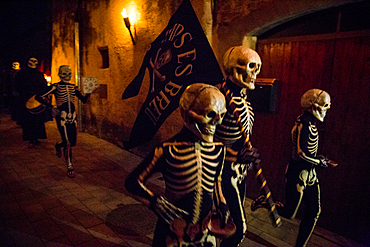
Verges, a small town in the Northeast of Catalonia (Spain), during Easter celebrates the Procession of Verges with skeletons dancing on the sound of a drum, Roman soldiers, known as the 'Manages', and a representation of the life and crucifixion of Jesus Christ. The Procession features the Dance of Death, a tradition from the Middle Age associated with epidemics and plagues and the only one remaining in Spain Ten skeletons dance to the beat of a drum to remember that no one is exempt of death. The backdrop of the medieval walls and towers of Verges is key to this macabre staging.

Verges, a small town in the Northeast of Catalonia (Spain), during Easter celebrates the Procession of Verges with skeletons dancing on the sound of a drum, Roman soldiers, known as the 'Manages', and a representation of the life and crucifixion of Jesus Christ. The Procession features the Dance of Death, a tradition from the Middle Age associated with epidemics and plagues and the only one remaining in Spain Ten skeletons dance to the beat of a drum to remember that no one is exempt of death. The backdrop of the medieval walls and towers of Verges is key to this macabre staging.
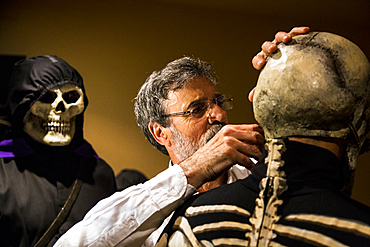
Verges, a small town in the Northeast of Catalonia (Spain), during Easter celebrates the Procession of Verges with skeletons dancing on the sound of a drum, Roman soldiers, known as the 'Manages', and a representation of the life and crucifixion of Jesus Christ. The Procession features the Dance of Death, a tradition from the Middle Age associated with epidemics and plagues and the only one remaining in Spain Ten skeletons dance to the beat of a drum to remember that no one is exempt of death. The backdrop of the medieval walls and towers of Verges is key to this macabre staging.

Among them there are also differences Nazarenes, some are barefoot and harder doing his penance, others bearing crosses, there are those who carry various representative elements of the brotherhood, musical objects, candles, etc,

Among them there are also differences Nazarenes, some are barefoot and harder doing his penance, others bearing crosses, there are those who carry various representative elements of the brotherhood, musical objects, candles, etc,

There are twenty three main platform, with the end of the procession marked by that dedicated to Our Lady of Solitude also called ,??La Dolorosa,?? because of the expression her face takes on upon seeing her dead Son, The statue is carried by around 40 men, carrying upon their shoulders a weight of over a ton,
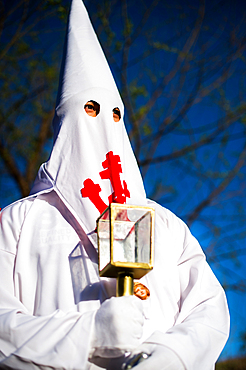
The participants, called ,??costaleros,??, have their head covered by a long, pointed hood adding drama to the action,
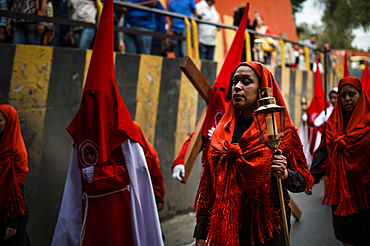
Among them there are also differences Nazarenes, some are barefoot and harder doing his penance, others bearing crosses, there are those who carry various representative elements of the brotherhood, musical objects, candles, etc,
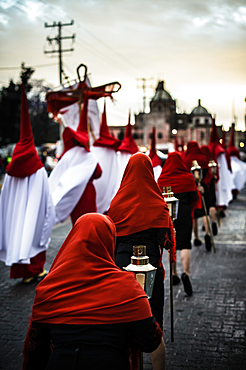
Among them there are also differences Nazarenes, some are barefoot and harder doing his penance, others bearing crosses, there are those who carry various representative elements of the brotherhood, musical objects, candles, etc,
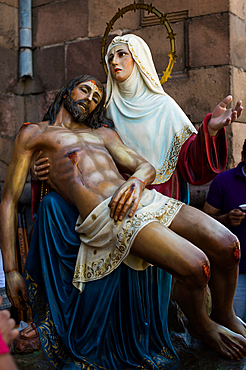
For almost 60 years, about two thousand people from 28 different guilds (associations of faithful Catholics) come together on Good Friday to participate in this procession, carrying emblems, religious images concerning the Stations of the Cross, and dressed in the distinctive colors of their guilds, Each one of the ,??Guilds,?? carries an image with a picture of Jesus Christ,??s Stations of the Cross and of the mysteries of the Holy Rosary,


